|
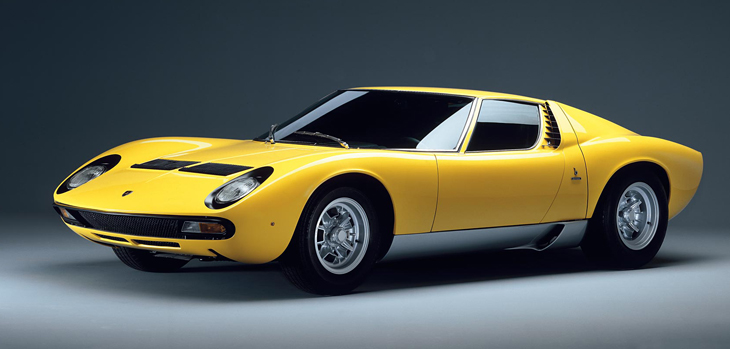
1965-1966 Lamborghini Motorcar History
Thus, by early 1965 the coupes from Sant'Agata were starting to be noticed. This was the first, great phase
of the Lamborghini company, and one of its most prolific and creative periods. Between October 1965 and June 1966, the company presented an astonishing number of new models. Although cars like the 3500 GTZ
(with a Zegato body), 350 Spyder by Touring and the Monza 400 by Neri and Bonacini were essentially prototypes, the seemingly extravagant chassis presented at the Lamborghini stand during the 1965 Turin
Auto Show was destined to have a profound impact on the history of the company and on the entire automotive industry. The design of this chassis can be traced to the enormous enthusiasm of the two young
engineers hired by Ferrucio to head the technical department of his factory. Both Dallara and Stanzani were young, passionate and enthusiastic. The trust that Lamborghini placed in them by putting them at the head
of this new and extraordinary operation quickly spawned new and more advanced ideas in the minds of the two engineers. These ideas were based on the state of the art in race cars during this period, namely the
two-seater sports car. This was indeed the concept of the two young engineers from Bologna: to put a barely tamed version of a full-fledged race car on the road, rather than a reinterpretation of the classic
traditional GT. Their project, provisionally codenamed 400 TP, thus had the 4-litre 12 cylinder engine of the 400 GT transversely mounted behind the cockpit, with the gearbox and the differential united to the engine
base in a single casting. The chassis was made of bent, welded sheet metal that was drilled to make it more lightweight.
As the story goes, when Lamborghini saw the project he approved it immediately, probably shocking the two very surprised designers, who certainly didn't dare hope for such a happy ending to their proposal. For once,
however, Lamborghini was wrong in his forecast: he declared that a car like that should be built because it would be good advertising for the make, even though it would clearly never sell more than fifty worldwide.
Every so often, even the best make mistakes. The chassis was completed rather quickly, and it was exhibited at the Turin Auto Show in October 1965. One person who believed in that chassis, and above all in
Lamborghini's capabilities was Nuccio Bertone. The Turin-based coach-builder was an expert on cars and engines, and as soon as he saw the chassis he approached Lamborghini and said, "I'm the one who can make
the shoe to fit your foot". The two shook hands, and this marked the beginning of an extraordinary adventure.
It was up to Marcello Gandini to interpret Bertone's ideas, creating a unique and sensational body for the
Bologna-built chassis, something that in its blend of aggressiveness, elegance, originality and class was to prove unrepeatable: the Miura was born.
No one actually knows why it was given this name. Above all, Ferruccio never wanted to disclose why he came up with the analogy to this breed of extraordinary and powerful bulls, a Spanish bullfighting legend. For
someone like him, a man who was born under the sign of Taurus and had used this symbol for the proud logo of all his industrial activities, naming one of his cars after a fighting bull must have come naturally. If
anything what is surprising is the fact that, in choosing the first name for his first car that would have enormous international impact, he instinctively chose the best and most appropriate name. According to
experts, Miura bulls are by no means ordinary animals. They are the strongest of all fighting bulls but, above all, they are the most intelligent and fiercest ones, in the military sense of the word. In their books,
bullfighters often talk about the unmistakable gaze of the Miura bull: the gaze of a true fighter, shrewd and powerful. The name was particularly apt and, with just five letters, it was also very immediate.
Work to ready the Miura immediately proceeded at a feverish pace. Gandini later recounted that from October to February, everyone worked around the clock, seven days a week, like madmen. A major event
was coming up and no one wanted to miss the opportunity to present this now model: the 1966 Geneva Motor Show. And therein lay the miracle: that the chassis presented as a completely experimental prototype
in the autumn of 1965 had become the most stunning road car in the world in just four months. The Miura reigned supreme at the Motor Show in Geneva.
Enthusiasm was sky-high and, in a sensational coup, Lamborghini managed to raise it even higher by bringing the Miura to the Monte Carlo Grand Prix, the most exciting weekend for sports cars in general and for
top-level Italian ones in particular. The orange Miura he parked in front of the Hotel de Paris that Saturday afternoon attract so many oglers that they completely jammed the square in front of the Casino, arousing
even more enthusiasm, interest and orders. It was, quite simply, a runaway success.
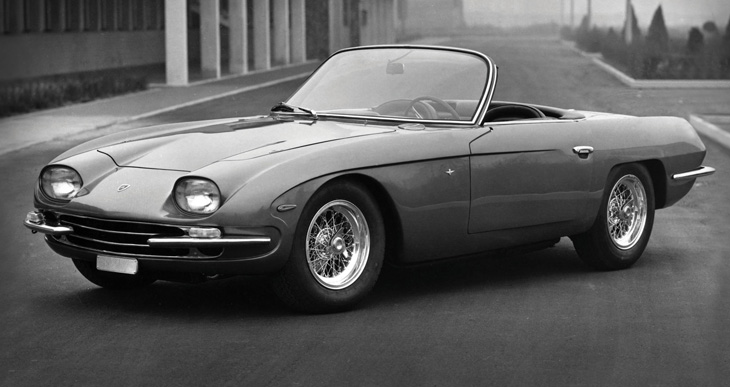
1965 The Lamborghini 350 GTS was the open-top version of the 350 GT. Only two units of this Spyder
were produced, both went on display at the 1965 Paris Motor Show.
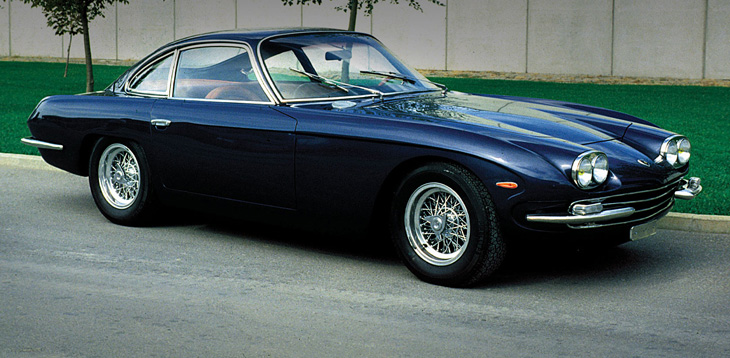
1966 400 GT 2+2 The luxurious Gran Turismo, Production of the 400 GT began in 1966 with the 4-liter
12-cylinder engine that had already been used in the last 23 350 GT models. Compared to its predecessor, the 400 GT was restyled and made roomier, resulting in the 2+2 four seater model.
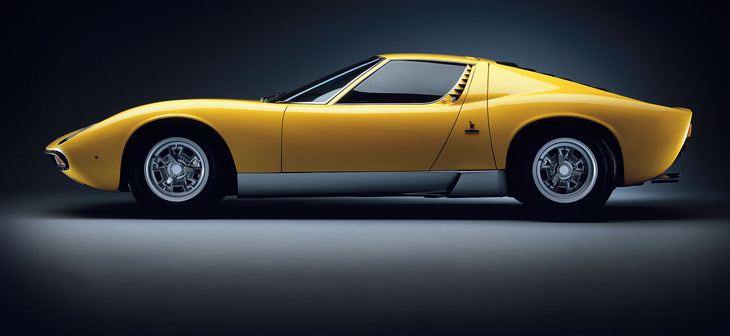
1966 Very few cars manage to change the automobile world like the Miura. With its central V12 engine and
fascinating body, designed by Marcello Gandini for Bertone, the two-seater redefined the concept of a sports car.
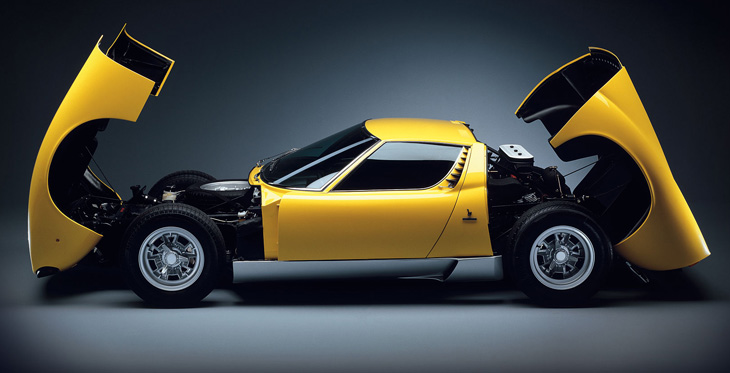
1966 Between 1966 and 1969 475 units of the 350 HP Miura were produced. But the success story did not
end there: The Miura was first developed further into the Miura S with 370 HP and later into the Miura SV, which had wider mud guards and a greatly revamped 385 HP engine with separate lubricating systems for engine and gearbox.
1966 At its debut the Miura was the fastest production car in the world: With a top speed of 280 kph and an acceleration from 0-100 kph in 6.7 seconds the Lamborghini Miura set new standards in the sports car
segment. The original Miura was produced between 1966 and 1969.
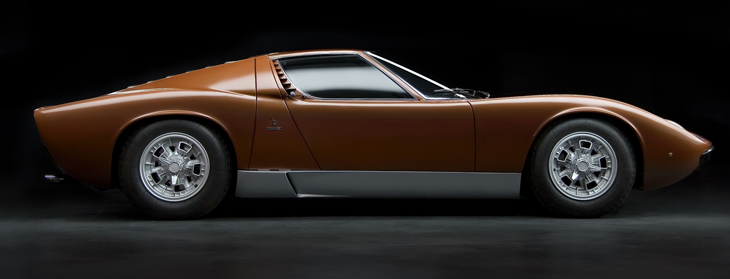
1966 Lamborghini Miura
- Production 19661972 (764 built)
- Body style(s) 2-door coupe
- Layout Rear mid-engine, rear-wheel drive
- Engine(s) 3929 cc V12
- Transmission(s) 5-speed manual
- Length 4,260 mm (167.7 in)
- Width 1,760 mm (69.3 in)
- Height 1,050 mm (41.3 in)
- Curb weight 1,292 kg (2,848 lb)
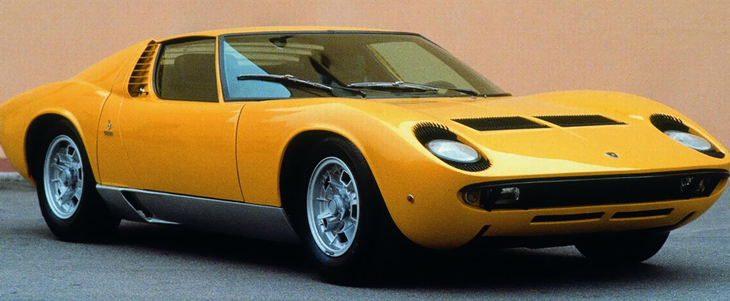
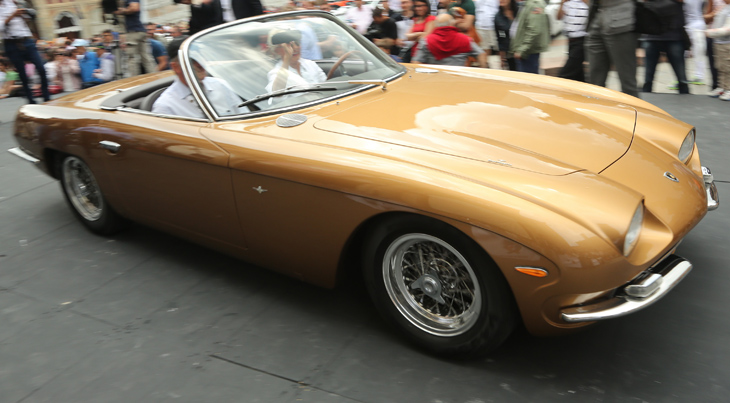
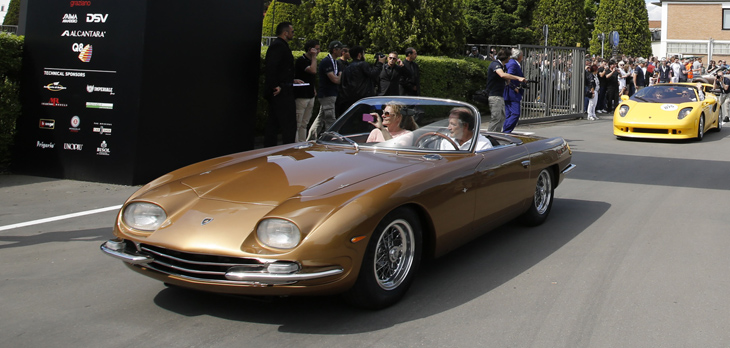
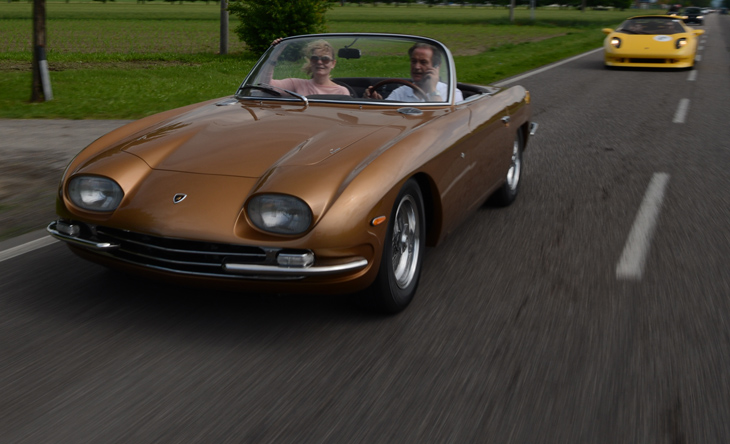
|